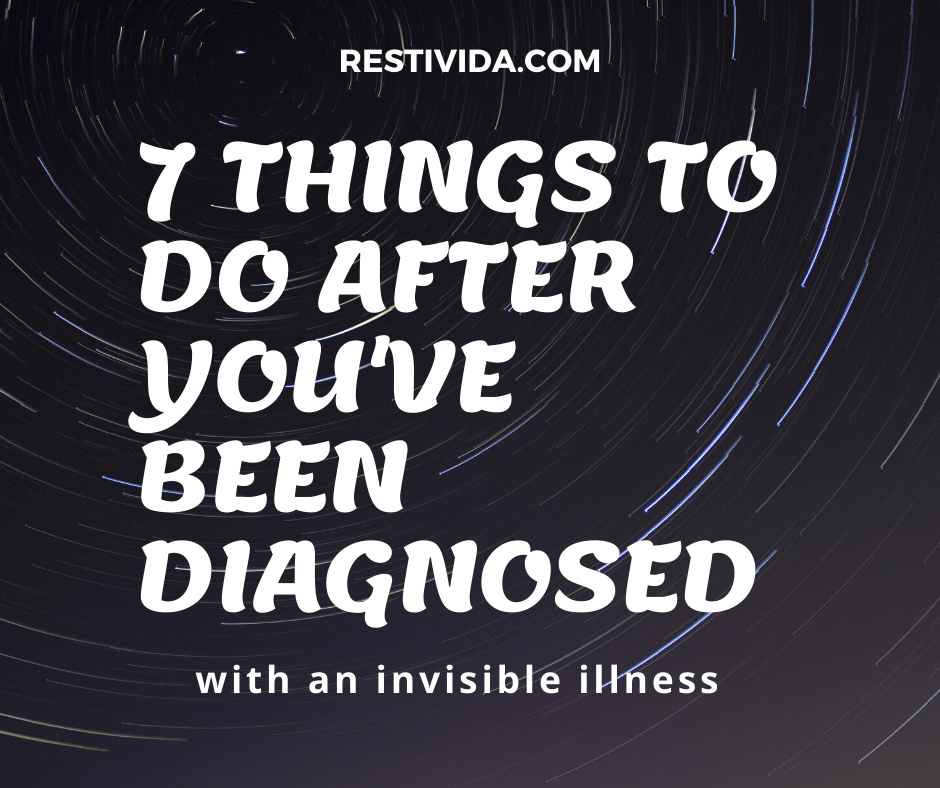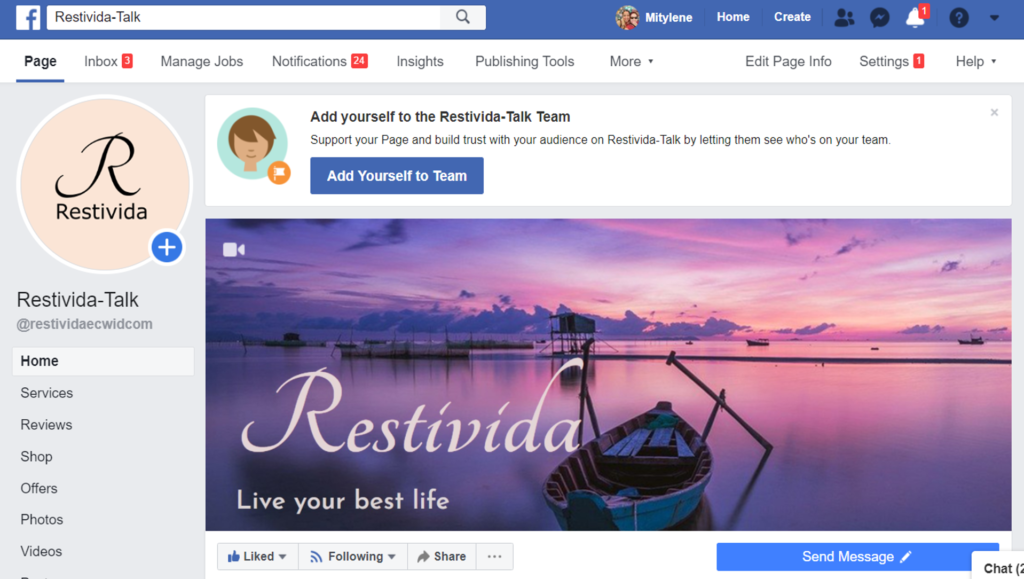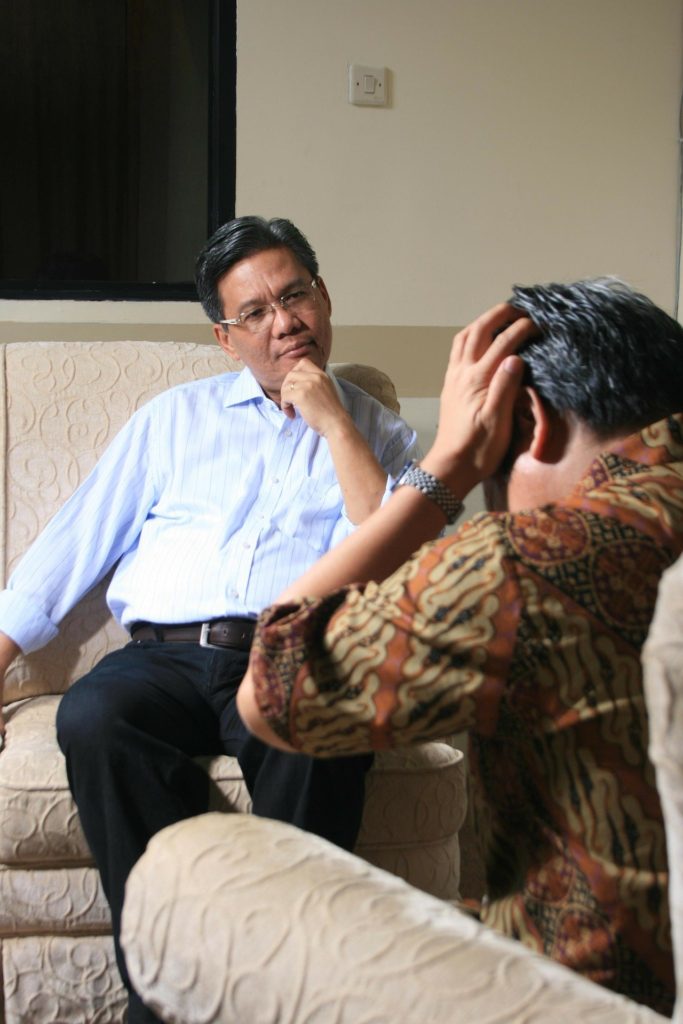This article may contain affiliate links. Please see our affiliate disclosure.
7 Things you can do after you've been diagnosed with an invisible illness
In this article you’ll find out what you can do after you’ve been diagnosed with an invisible illness.
You finally got a doctor to listen to you. You finally got them to do all the medical tests and imaging that you had wanted them to do from the start. You swore that this time they will find something different. A tumor, a polyp, a pinched nerve…something! Unfortunately, all of the tests and images came back normal.
You. Are. Completely. Normal.
In this game of life you have pulled that card from the deck. The card that says that you will be in pain 24/7 for the rest of your life. You’re written up a prescription for your first pack of pills, get scheduled for your next appointment and you’re out the door.
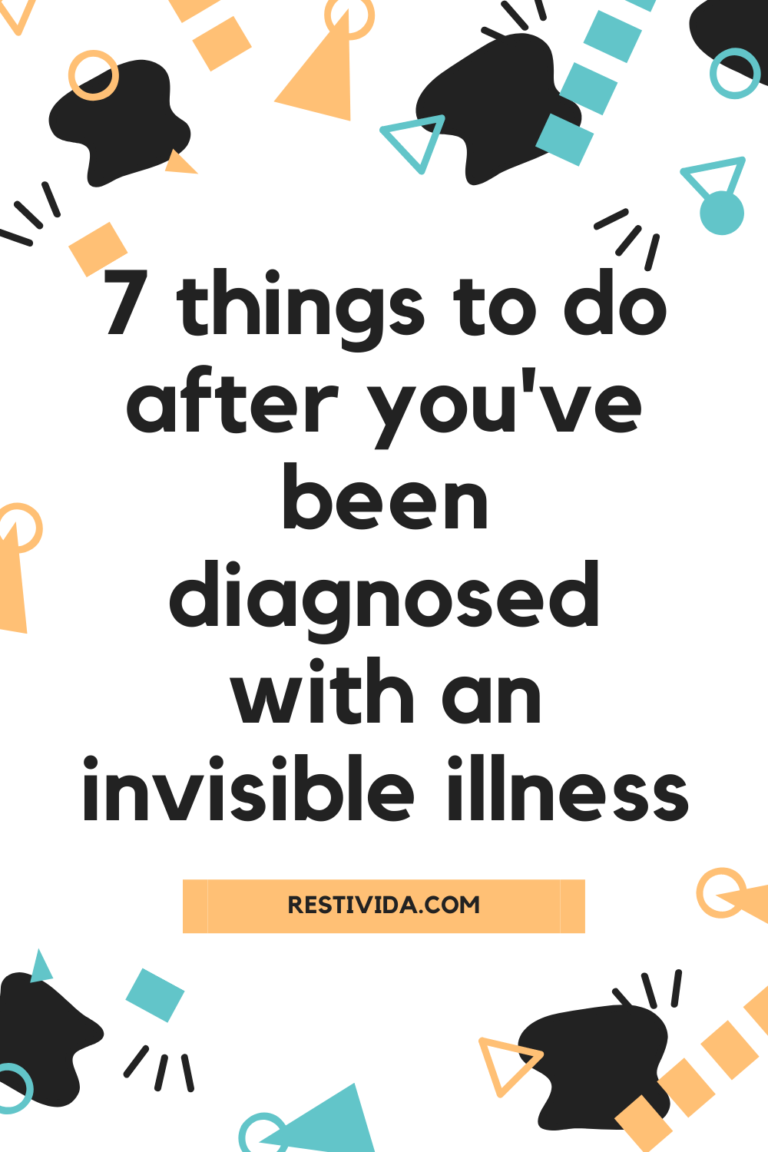
As you walk out the door your mind is racing, who do I call first? What is an invisible illness? What’s going to happen to me? Sure, there’s a cure, right?
If and when you do get a diagnosis…What exactly do you do after you’ve been diagnosed with an invisible illness?
It’s OK to cry yourself into a puddle when you get news like this; it sucks! But after you regroup it’s time to put one foot in front of the other and keep going.
Here are Seven (7) things to do after you’ve been diagnosed with an invisible illness
1. Check for other underlying issues.
Yes, more tests! But these tests are different; these are self tests. Most of the time invisible illnesses stem from a previous injury, trauma, chronic viral infection, lifestyle, environment or genetic predisposition.
More often than not, it’s the wear and tear of a high stress lifestyle that aggravates invisible illnesses and makes them worse. But there’s more:
Try to remember if you had an accident or old sports injury. The way pain is processed by the brain is different in Chronic Pain Illnesses such as Fibromyalgia and Sciatica. Did you experience any trauma that may have triggered or aggravated your Chronic Pain?
Viral: A common reason for Invisible Illnesses is a chronic viral infection that wasn’t fully resolved. Think back a few or even several years ago. Could it be a flu or mononucleosis, Epstein Barr that was never fully resolved? Camping trip or picnic where you might have been bitten by a tick? Lyme disease is one of the culprits. If you suspect this you can request a test from your medical professional.
Lifestyle: The first place to look at is in your plate then in your bed. Are you eating well? How is your sleep? How is your stress level? Eating healthy and having a balanced diet is sometimes confusing. There are so many diets coming at us all at once. Eat this, eat that. Don’t eat this or don’t eat that!
A simple solution while you research on the right diet for you is this: Lean protein, complex carbohydrates, fruit and vegetables. Follow that with plenty of water.
Sleep solutions are similarly very specific to each person and it helps to reduce Chronic Pain.
The best way to start is by preparing your sleeping area and keeping it reserved only for sleep. Follow an organized sleep pattern. Reduce screen time at least an hour before. Sometimes a warm bath or foot bath can relax you. If you’re in a household where you look after family members let them know it’s your time now.
It’s a new change that the entire house has to go through. Explain to them that if you get this time now, you’ll be a better person for them tomorrow.
Environment: If you’re an urban dweller everywhere you go there is smoke and fog and dust and other every other thing lingering in the air. Most of the time there is no way of escaping this unless we find a quiet park or go out of town for a bit.
This type of air can cause the amount of free radicals in our bodies to increase. These can damage the cells and other parts of the cells that are important for making energy or controlling mood and transmitting pain signals. Our bodies can go haywire after long term exposure to free radicals.
Genetic Predisposition: If you can, look at your family tree you can notice some patterns. Grandpa having IBS? Aunt with CF or Mom with RA or unspecified Chronic Pain? When it comes to some Chronic Pain conditions there may be a genetic link. Scientists have discovered mutations on some genes that directly associate with sufferers of fibromyalgia. There is a lot of research to be done but there’s a start. Hopefully in time, all the other Invisible illnesses will have some new insights.
2. Get support from a friend or Online support groups.
As the old saying goes, who feels it knows it. Find a friend or join online support groups on the various social media platforms. Volunteer at organizations catered to your specific condition and help out with events and/or event planning. Some of us are more on the religious side and will find a lot of comfort from attending religious gatherings. These organizations are full of like minded persons just like yourself that can offer support on bad days and share joys in your progress.
Online support group: Most of the time you just want to know that some of the symptoms that we have are not far-fetched. It’s bad enough that some of the symptoms we feel are questionable. It’s always great to have a group of people that may share similar symptoms and you can share solutions that can offer relief. Facebook is a great opportunity to meet people
from all over the world that share similar experiences. Like our Facebook page. You’ll find free information and support.
Non-profit Organizations (NGOs): Local organizations can offer support groups or just an outlet to gather and do group activities and volunteering opportunities. These groups may not be specific to invisible illness management but it’s a great opportunity to divert your attention from ailments that are affecting you ─ A safe haven to go when you’re up to it. No obligations.
Spiritual Organization: Most of the time these places are very welcoming to new members and offer spiritual guidance when it comes to understanding and coping with physical pain and chronic illnesses. It’s here that there’s also help for whatever other needs that could be met such as friendship, support or the fulfillment of being around people that focus on spiritual well-being and peace.
3. Choose a treatment
This is one of the most important decisions that you’ll make. This doesn’t mean that you can’t switch between treatments if you wish. You can even design a treatment that is a combination of methods that is suitable for you. It’s your body and you and only you know exactly how you feel. Do your research and trust that gut feeling.
Supplements: You will need to consult with a professional if you are going to take this route. First it’s best to do some research on your condition before you take a step. It’s better to use accredited scientific journals that speak on case studies and projects and reviews that they put together. Since most scientific journals require hefty subscriptions, it puts much of it out of our reach. You can use the Directory of Open Access Journals or PubMed Central and start searching there FREE of cost.
Take notes and go to your medical professional with an idea of what you want to start with and how much. Give yourself two weeks to sort this and wrap up before analysis paralysis sets in and you have no idea what to decide. If you’d like an idea on what supplements to take and what to expect check out our reviews on iHerb.com. Again, before you start taking any supplements please seek professional advice.
Healing foods: Not everyone is privy to the handful-a-day club i.e taking supplements. Maybe you prefer to get relief by focusing on foods that have healing properties and concentrate on getting the most important aspects of it into your diet. There are some instances of persons claiming to have completely reversed their condition by focusing on healing foods and avoiding supplements and medication.
Here again is more research. What are the nutrients and components that are missing or required in your body? Once you have found that key, look for foods that have high amounts per serving and begin incorporation. It takes some time to come to a great collection of foods and how they can help but no matter how small, it’s a step in the right direction.




Medication: This is the route that you may be most trying to avoid but sometimes the pain is too much or the sleeplessness is overwhelming. You’ve tried all the other suggestions before and nothing has worked. So here you are, with this decision to put your life into the hands of your medical professional.
If this is the way you have chosen, find someone that you can have an open relationship with who can discuss your treatment and options. Make sure that they are completely transparent and let you know any side effects and alternatives that may benefit you.
Your comfort is paramount here, you have been through enough pain. It’s time to rest. It’s time for relief.
4. Change your diet
Food is fuel and food is medicine. Every bite you take can heal or hurt you. Changing your diet is a daunting task but it doesn’t have to be. Small changes can be made a little at a time. Think of it as a diet evolution rather than an abrupt change. Make small commitments and stick to it. Skip the soda and have water instead; add a little lemon juice to your water. Always be gentle with yourself if you slip up.
Remember it’s an evolution, slow and steady wins the race.
Eliminate inflammatory foods: Some foods can cause inflammation Chronic inflammation can lead to diseases such as cancer, heart disease, Lupus, RA just to name a few. Could you imagine what this can do to your Chronic pain? Eliminating inflammatory foods is the first step to a healthier body.
This will come with more research from you. Take great notice when you eat, observe what certain foods do to you after 1 hour, 2 hours, 3 hours and 4 hours. Start by eliminating foods from your diet that have a negative effect on you.
While there are tons of programs to help us along to do this there is also a lot of free information on the Internet. The key here is research. Each plan and program will be specific to you and you alone.

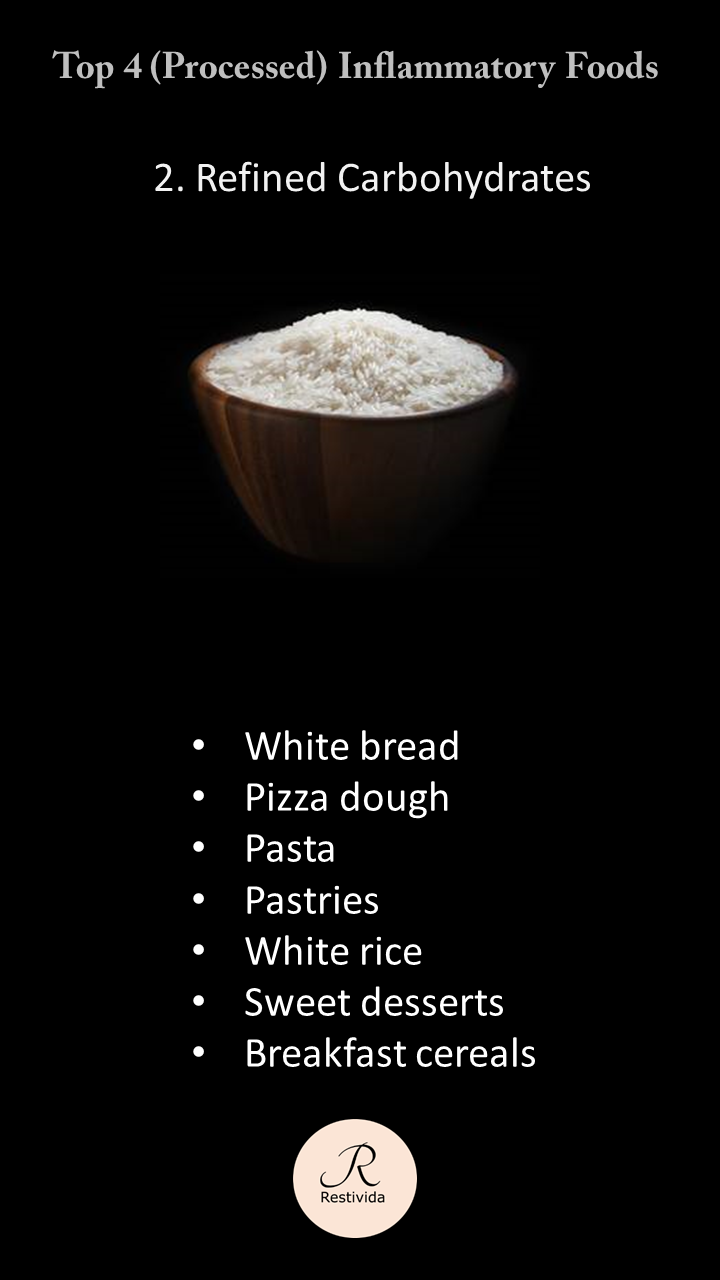
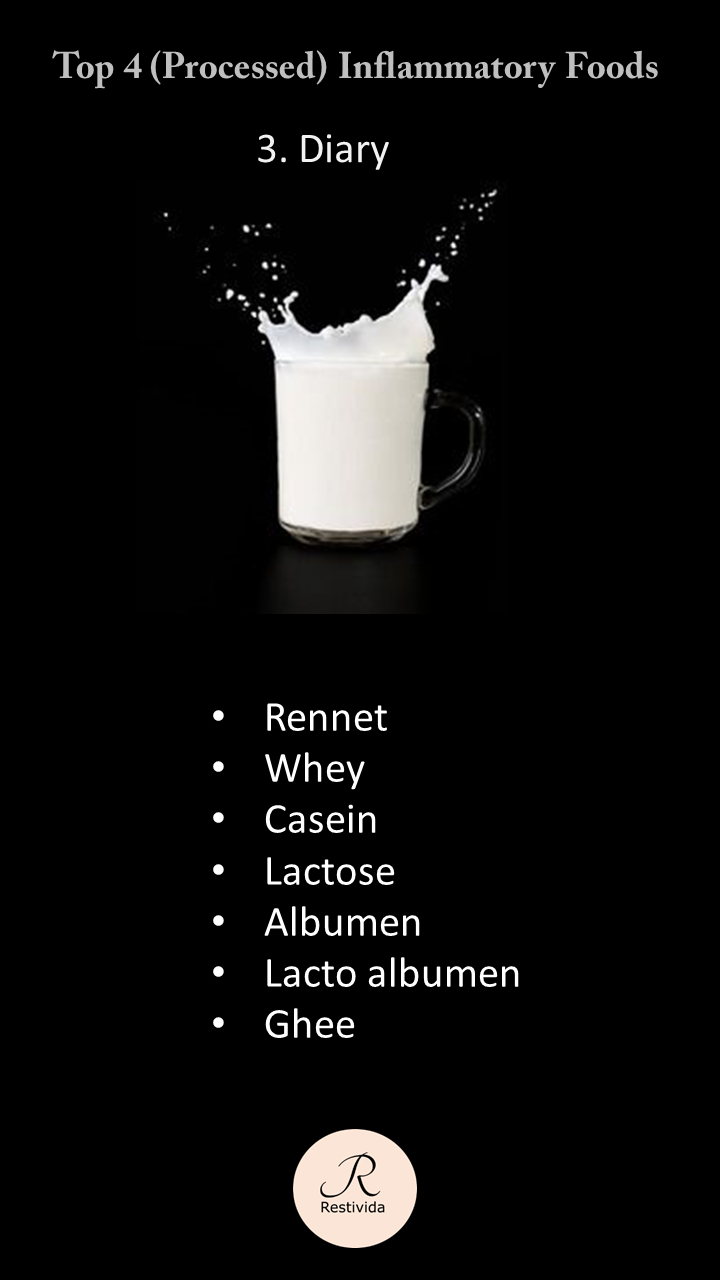

5. Get mental health support
Learning that there is an illness that you will never get over is one of the most bitter pills to swallow. There are so many feelings and thoughts that can arise when hearing that you have a chronic illness, that will never go away and no one can tell you’re ill by just looking at you. Depressive moods, anxiety and panic attacks are the most common problems on top of all the body pain and fatigue that you’re experiencing.
Therapy
Imagine being in constant pain and the solution is …therapy! Are they nuts? Not really, there may be some rationale there. Being in constant pain and lacking sleep has been shown to cause depression.
In addition to that, having been to so many different doctors probably for years and never getting an answer is very frustrating. Having someone to talk to about how you’re feeling is a great way to share the deeper feelings and fears that you may be reluctant to share with anyone else. It can also help you resolve some trauma that may have triggered your condition in the first place.
Therapy can sometimes be expensive but don’t shy away once you hear the price some centers offer free or reduced rates based on your budget or your community center may have a program to get you connected with a professional. Don’t be afraid to walk up those stairs and through those doors. You may be confronted with things about yourself that you may not like but it’s all going to be worth it.

Think about it…steps in the right direction. Although there are many types of therapy two types are especially helpful for sufferers of Chronic Pain:
Cognitive behavior therapy (CBT): The aim is to change the way of thinking by being practical about how to solve problems by changing your behavior or thoughts towards a particular situation. They will provide you with solutions that can be done using a goal-oriented and short term approach. Most of the time you’ll find yourself completing worksheets and writing lists of positive things in your life. CBT online therapy is also an option.
Online Therapy.com is a great choice if you are not willing to venture out just yet. You can contact a therapist chosen for you for 20% off your first session. There’s a Free, Basic, Standard and Premium plan. You can try the free plan first. Even that small bit can begin a change. This single solution can give you a leg up on life or at least a little part of life. If at least one task in your life has been made simple that is another step in the right direction.
One great example is a gratitude list made everyday for a couple weeks. Either physically write it down or make a mental note of it when you’re having a sleepless night or a particularly off day. Find a quiet place and reflect on all the things that are going right rather than what’s going wrong.
Psychotherapy: This is also called talking therapy. Usually, there are no worksheets to do. Every therapist has a different style but the focus is going to be on your well-being and mental health. The therapist will try to help you manage your behaviour and beliefs that may be harmful to your health
and overall wellness. Most of the time these sessions are one-on-one but it can sometimes be with a group of similar persons or with family. A lot can be gained from these sessions and it can really turn around the way you see the world and other people in it.
Biggest takeaways will be how you and your loved ones understand how you’re coping with this condition. You’ll realize that they do care about you and they will realize your limitations. If you are not ready to be face to face with another person, that’s OK. You can try Bliss. They give you eight (8) interactive sessions for absolutely FREE! All your information remains anonymous and you can access the site from a computer anytime, anywhere.
Books
A great way to receive professional guidance when therapy is not an option. You can find great self help books at your local library. Most of the time membership is free and the staff is willing to help secure books from other locations if they’re not there. Don’t be shy! Just ask. Remember it’s for your health and improvement. Some books such as the one by Ginerva Liptan, M.D. (a board-certified internist who istrained in functional medicine. She takes a holistic approach that blends both western and alternative medicine) outlines step by step how you can select treatments that are suitable for you.
6. Try some light exercise
Exercise is the last thing that anyone with Chronic Pain wants to do…
Tai-chi is one of the most recommended exercises for pain relief because of the body and mind connection that it makes with each session. Persons suffering from Chronic Pain will benefit from the slow deliberate series of dance-like movements called forms which are designed to relieve pain, reduce stress and create a feeling of well-being and better sleep among a host of other benefits.
In some regions signing up for a cheap or free class at the local community center is possible. There may even be businesses that have these classes available.
You may also find some great FREE sessions on Youtube with established channels. Here you may also find QiGong which are specific moves for a specific purpose eg. opening your lungs etc.
Yoga, similar to Tai-chi, is one of the activities that have been shown to reduce pain by changing the way your body perceives pain. Yoga is different from Tai-chi since it is based on holding forms in place and is less dance-like. Yoga classes are usually easy to come by. If you do a class outside the home you may need to hop on Amazon to purchase yoga gear: pants, mat etc. If you do it inside the home there’s really no need for all the fancy gear outside of your pyjamas and a great Youtube channel!
Walking is free, but you’ll need to invest in some great shoes. On second thought, never mind about the shoes if it’s too pricey, just take a quick stroll around your block and come back inside. A simple pair of Sketchers should do the trick. Walking is a great opportunity for you to get some sunshine and breathe in some fresh air. That little increase in heart rate is enough to give you a little pick up at least for an hour. If it hurts too much still you can
start by going to the front door, or to the drive way and backor a quick walk around the backyard. The feeling of accomplishment mixed in with pain is none like any other.
Walking in groups is a great idea too but be sure to let them know that you are not always going to be feeling up to it and assure them it’s not personal.
Swimming lifts your weight off your body.
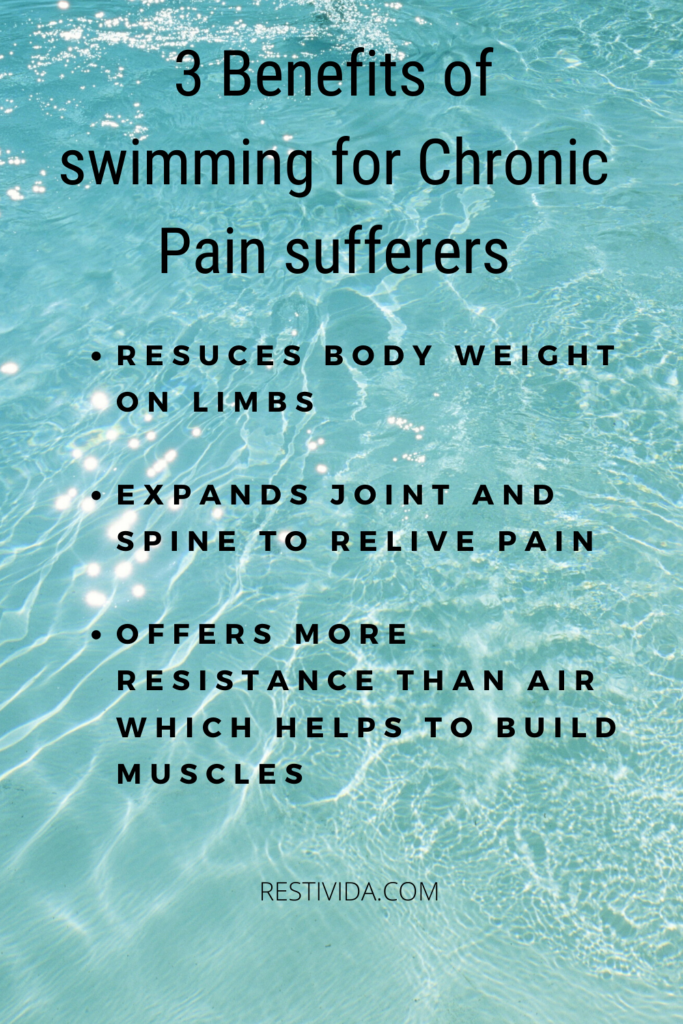
The floating sensation is pleasurable and since it expands your limbs and spine it may reduce the pain. Water also has more resistance than air so it’s a great way to gently build muscle and maintain your weight with low impact exercise. Most places have a public pool or a paid access pool that’s more or less reasonable. Swimming will require some investment but it doesn’t have to cost you an arm and a leg. Grab some swim gear (and don’t forget a cap!) What’s one try? You might like it.
Biking: This is another low impact exercise that you can experiment with. A great advantage with biking is that it forces you to go outside and in an area where it’s likely to be pleasing to the eyes. You’ll have an opportunity to experience the sights and sounds of nature. It’s better to purchase a bike at a store in person rather than online so you can have it set up for you and you can try it out yourself. The store personnel can adjust the seat and handlebars to your liking.
Still don’t feel like going outside? Unpleasant weather? Get a stand for your bike and ride away in your living room as long as you’d like. You’ll have a stationary bike or a mobile bike whenever you’re ready!
7. Move on, smartly
This is the last step of acceptance. In some ways you might feel relief and freedom that you finally have a name for your condition be it Fibromyalgia, Chronic Fatigue CFS/ME, Sciatica, Rheumatoid Arthritis, Plantar fasciitis, Lupus and Irritable Bowel Syndrome (IBS) just to name a few. (If your condition was not named here please let us know in the comments so we can update our site. We want everyone to feel included.)
Now you know it has a name, now you know why you’ve been feeling the way you have. You can now share this information with whomever you trust and they also have the opportunity to understand why you’ve been acting the way you do. But something else happens.
You stop caring! You stop caring about what people think, feel and say about you.
All the little things don’t matter anymore and you seem to have been catapulted into a level of enlightenment that you find peace in. The random person giving you a dirty look at the store doesn’t bother you anymore. The impatient teller at the bank doesn’t get under your skin at all. That nosey co-worker becomes invisible to you.
While you’re in this state of don’t-give-a-damn-itis it is the perfect time to take some steps to maintain that.
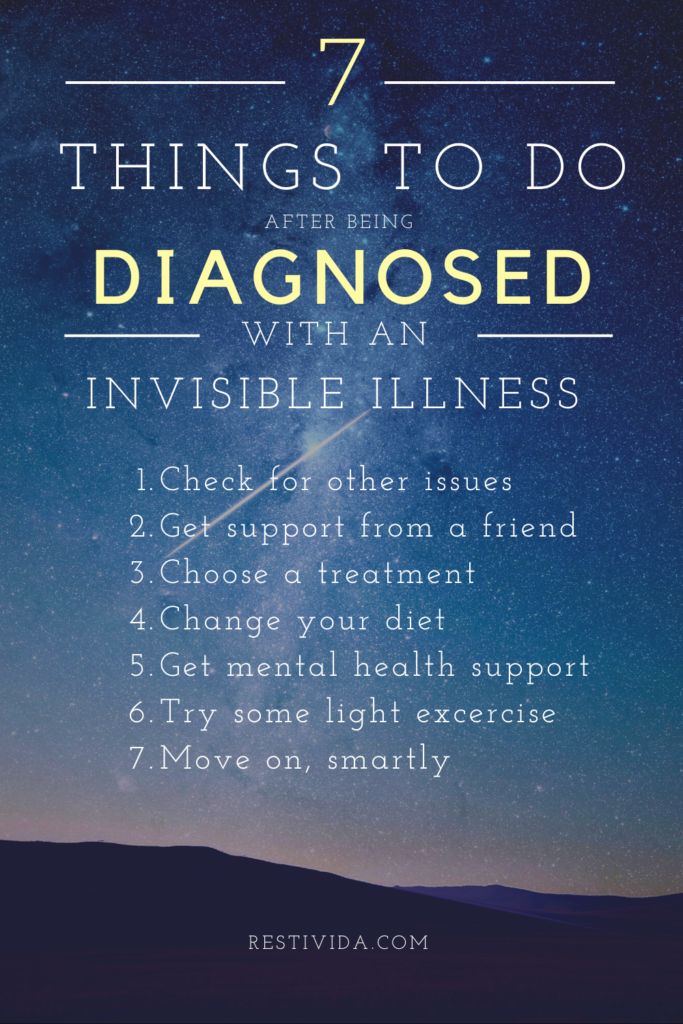
Meditation is a great way to start. There are a few different types of meditation but it all starts with intent:
- Sit in a quiet place and make yourself comfortable
- Close your eyes or turn your gaze down (Think Buddha statues)
- Breathe normally
- Focus on the feeling of your breath on your upper lip as it moves in and out of your body.
Do this for at least 10 minutes per session. It doesn’t even have to be everyday.
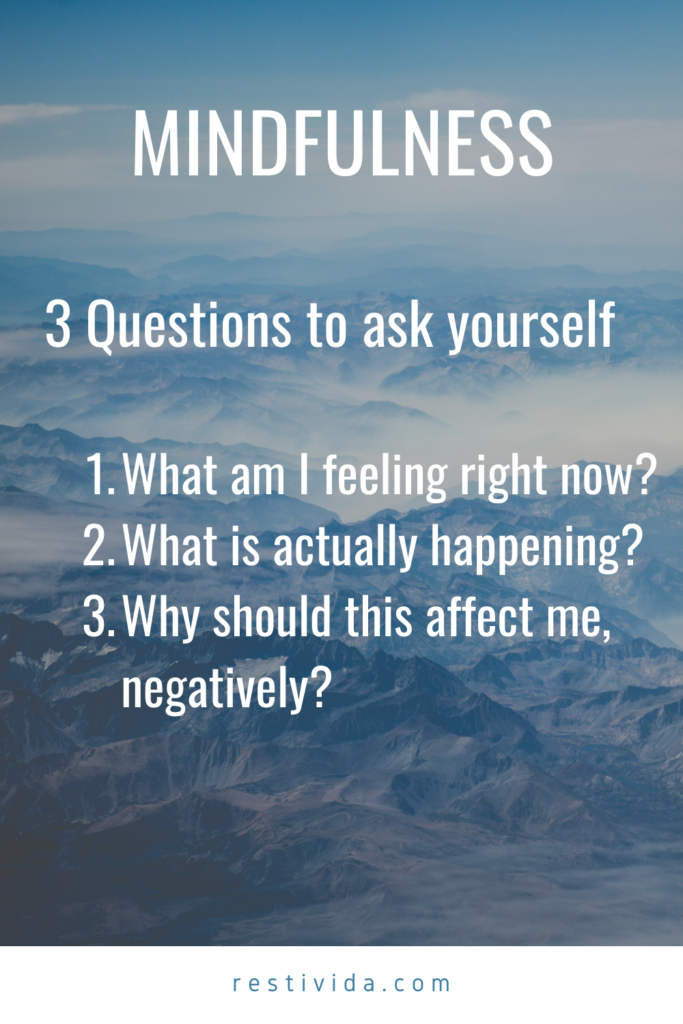
If you have trouble focusing there’s music on soundcloud or guided meditation on youtube that you can listen to for FREE.
Mindfulness goes hand in hand with meditation. It is the daily and intentional practice of living in the present moment. It involves experiencing the world without any judgement or assumptions. You will realize that someone having “an attitude” towards you really has nothing to do with you at all.
You’ll suddenly won’t be triggered by other’s words or actions as you were before. This reduces stress and that reduces pain and you’ll sleep a lot better without these thoughts racing through your mind.
Mission Be is a non-profit organization that focuses on mindfulness directed toward gratitude, peace, empathy and how to let go designed for school children but anyone can benefit too. Mission Be mindfulness videos is a great start to practicing mindfulness. Give it a go FREE of charge!
Maybe you didn’t know what you can do after you’ve been diagnosed with an invisible illness and hopefully these tips, even one of them can be of help to you.
Whatever you decide to do, make it all about you, first! Everyday won’t be easy for you but a step in the right direction, one at a time, is all you need. There’s no need to feel defeated if you spend a few days in the bed recovering because of a flare. Take the time to meditate, record symptoms and practice mindfulness. During this time don’t forget to feed your body properly; it needs the fuel.
Take your supplements or medication and read the books you bought or got from the library. Use the time you’re in the bed recovering to make that bounce back better than the last.

